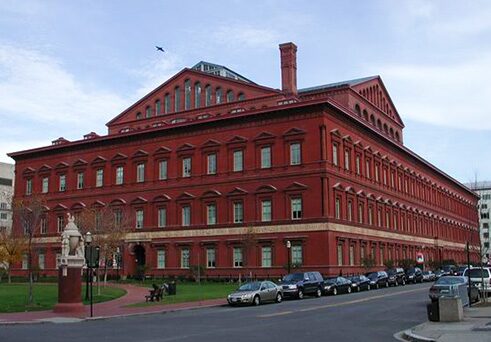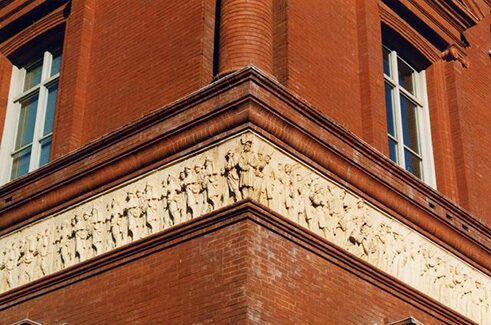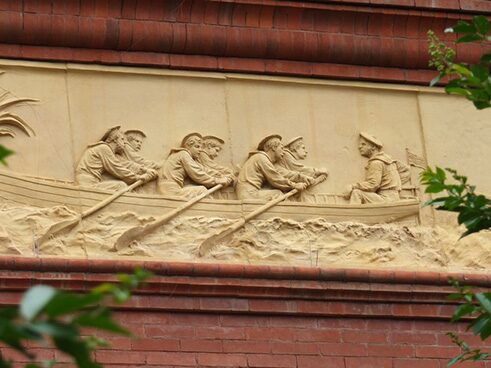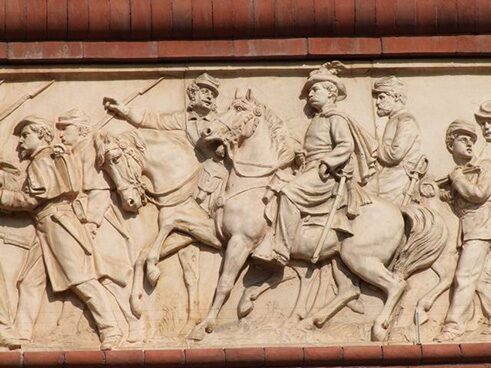National Building Museum Frieze
German Roots in DC
-
National Building Museum (Pension Building), 2015. -
A 1200-foot-long and 3-foot high frieze by New York-based artist Caspar Buberl, 2015. -
Soldiers in Buberl's frieze for the Pension Building, 2015. -
Sailors on Buberl's frieze, 2015. -
Soldiers in Buberl's frieze for the Pension Building, 2015. -
Soldiers in Buberl's frieze for the Pension Building, 2015.
"The buff-colored relief frieze which circles the building just above the first floor windows is composed of two to four feet long terra cotta panels. The running frieze depicts Civil War soldiers and sailors marching, riding horses, driving wagons, rowing boats, and pulling artillery. The portions of the frieze over the entrance arches on each side of the building reflect the themes of each entrance arch—the Gate of Invalids on the north, the Gate of the Quartermaster on the west, the Gate of the Infantry on the south, and the gate of the Navy on the east. Allegorical figures in the spandrels of the entrance arches symbolize Peace through figures of Justice on the north, Truth on the south and War through figures of Mars on the east and Minerva on the west. There are two smaller friezes ringing the building, one depicting alternating upright cannons and exploding cannon balls appears above the third floor windows and one depicting crossed swords, stars, and cannon balls runs around the building above the second floor windows."
Caspar Buberl, Sculptor
Caspar Buberl was born in 1834 in Königsberg a. d. Eger, Bohemia (now Kynšperk nad Ohří, Czech Republic). His most celebrated work in Washington is the magnificent terra cotta frieze of soldiers and sailors on the exterior walls of the Pension Building, now the National Building Museum.Buberl was also responsible for other sculpture in Washington: "Columbia Protecting Science and Industry" (1881) above the Mall entrance to the Smithsonian's Arts and Industries Building (built as the United States National Museum), and for the relief panels and roundel portraits in the Patent Building's model hall (now home to the Smithsonian American Art and the National Portrait Gallery).Buberl was also responsible for many Civil War memorials, both Union and Confederate, located in places as far afield as Hartford, Connecticut, Buffalo, New York, Richmond, Virginia and Mobile, Alabama. A number of his monuments (to New York battallions) can be found in the Gettysburg National Military Park.





